Are you a diabetes patient? If yes! Then you might have experienced some skin issues. Diabetes effects most parts of the body, especially the skin. In most cases, the very first indication of diabetes are usually connected to skin problems. It is predicted that 30% of diabetic people may have a skin condition during their disease. As certain as the presence of these issues is, the treatment of each disease is also available. According to American Diabetes Association,there are several skin complications connected to diabetes.
Keep reading if you want to learn more about the skin conditions that anyone can have due to diabetes.
1. Acanthosis Nigricans:
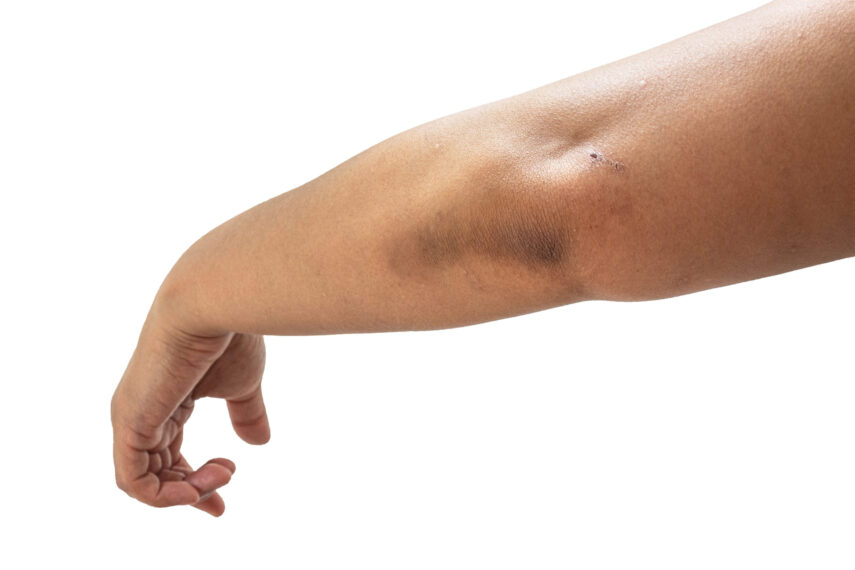
Acanthosis Nigricans can afflict persons who are generally overweight or be linked to certain medical disorders and diabetic patients. It is a skin disorder that causes the skin to darken and thicken. On the sides of the neck, armpits, and genitals, tan or brown skin appears frequently, occasionally slightly elevated. These black spots might form on the hands, elbows, and knees at times. Despite being linked to only affecting healthy people, studies have shown that Acanthosis Nigricans generally is shown by diabetic patients.
2. Diabetic Blisters (Bullosis Diabeticorum):
Diabetes patients can get blisters that resemble burn blisters. Bullosis diabeticorum blisters can appear on the fingers, hands, toes, feet, legs, or forearms. Blisters caused by diabetes are normally painless and heal on their own. Moreover, these blisters are caused due to diabetic neuropathy.
3. Diabetic Dermotherapy:
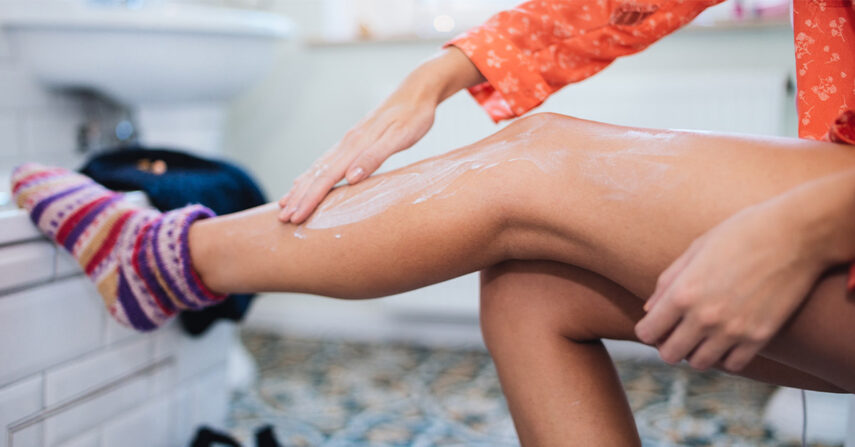
Diabetes can harm the body’s tiny blood arteries, which supply blood to the skin. Diabetic dermopathy is a skin disorder caused by changes in blood vessels as a result of diabetes. Dermopathy manifests up as scaly, light brown, or red areas on the front of the legs. There is no pain or itch related to the spots and the treatments is available, though not necessary. The patches are commonly called skin spots
4. Atherosclerosis:
The narrowing of blood arteries and the thickening of vessel walls is known as atherosclerosis. While atherosclerosis is most commonly linked with blood vessels in or around the heart, it can affect any blood vessel in the body, including those that supply the skin. The effect of thinning of walls of the skin supplying vessels decreases the flow of oxygen to the skin and in turn, affects the skin negatively. Atherosclerosis causes hair loss, thinning and glossy skin, thickened and discolored toenails, and chilly skin. Due to the blood containing white blood cells necessary for healing, injuries in the body are rectified slowly as the blood flow is lowered.
5. Reaction to allergens:
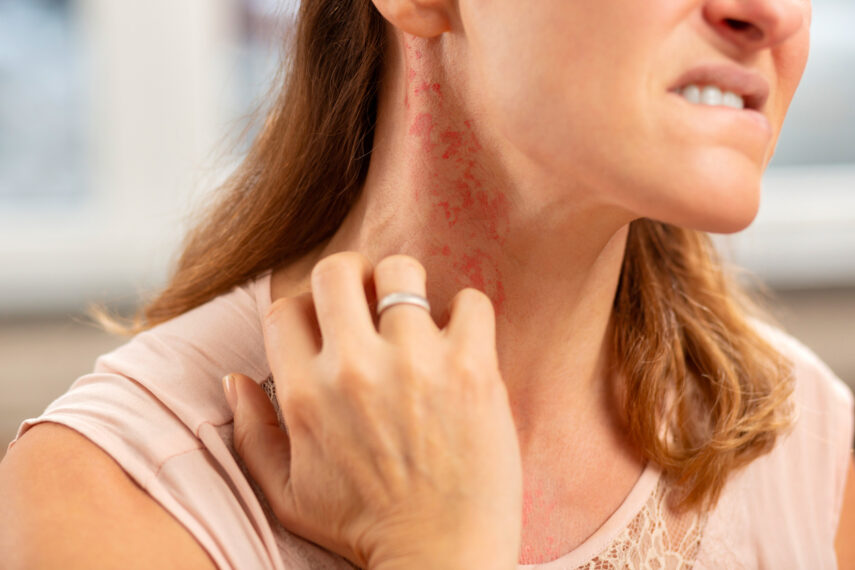
Rashes, depressions, and pimples on the skin can be caused by allergic responses to foods, bug bites, and medicines. Severe allergic reactions may necessitate immediate medical attention. Checking for rashes or pimples in the locations where you inject your insulin is especially important for people with diabetes. Contact your health care practitioner if you believe you are having an allergic response to a drug.
6. Necrobiosis lipoidica diabeticorum:
NLD is another condition that alterations can induce in the blood vessels. The spots caused by NLD are comparable to those caused by diabetic dermopathy, except they are fewer, bigger, and deeper. The first sign of NLD is usually a dull, red, elevated region. It takes on the appearance of a shiny scar with a violet border after a while. The blood vessels beneath the skin may become more visible. NLD might be irritating at times. The treatment of NLD is not deemed necessary until the sore tear open. When they do, it is advised to consult your dermatologist for the treatment of NLD.
7. Eruptive xanthomatosis
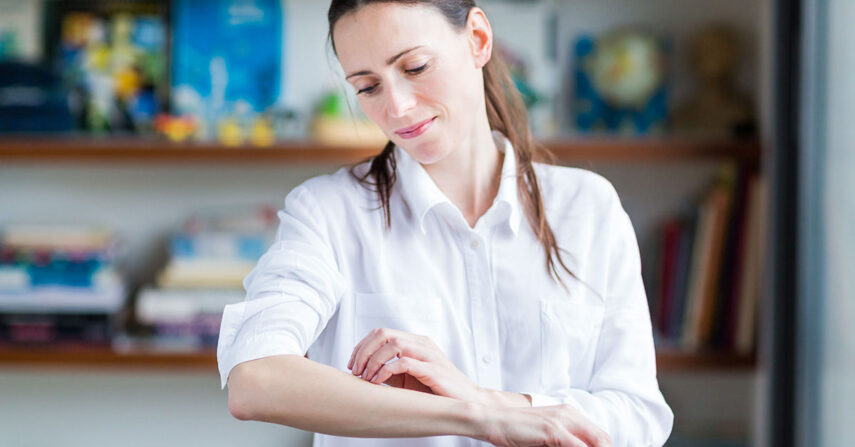
It is another disease induced by uncontrolled diabetes. It’s characterized by firm, yellow, pea-like skin enlargements. A red halo surrounds each bump, which may itch. The backs of the hands, feet, arms, legs, and buttocks are the most commonly affected areas. Young men with type 1 diabetes are more likely to develop the condition. Lipid-lowering drugs are used to aid in the reduction of this disease.
8. General Skin conditions:
Several bacterial infections occur in diabetic patients like boils, carbuncles, styes, Folliculitis, etc. Fungi like Candida albicans cause several skin problems. Diabetes is also a common cause of widespread itching.
9. Itching:
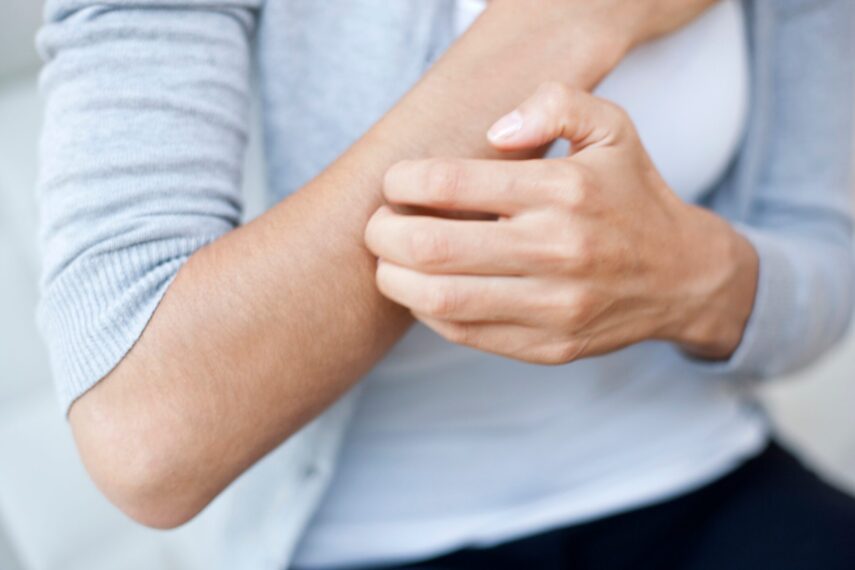
Puritus is another word for itching that ocurs due to the presence of diabetes in the body. Itching can be caused due to a number of reasons, mainly yeast infection or poor blood flow. When the decreased blood flow is the cause, the feet and legs are more commonly affected. Taking frequent hot showers and moisturizing your skin works to ensure that your itch is dissipated. Furthermore,the use of gentle and hand crafted soaps works wonders in reducing the itchiness in your skin.
10. Scleroderma Diabeticorum:
Visible on the back of the neck and the upper back, Scleroderma Diabeticorum is a disease where the skin thickens. Although it sounds like the very first thing to happen to a diabetic patient, this disease has been noted to occur in diabetic patients who are overweight. Frequent showers, gentle soaps and moisturizing lotions help a great deal in softening the skin.
Conclusion:
Skin issues related to diabetes are frequent, but are nothing major that cannot be solved. After the initial observation of any aforementioned issues, it is vital that the dermatologist is consult in regards to treating those problems. Diabetic patients need to be vigilant when contracting and rectifying these skin issues in case the problem reaches greater heights. Therefore, if you’re a diabetic patient who has observed an issue emerging on their skin, then your first course of action should be to consult a doctor about treating it immediately.
All in all, there is nothing to worry about when you are diabetic and have contracted a skin disease. The only necessary thing is to consult a doctor and work out the treatment of your issue. There is a treatment available for every issue and the only thing required by you is to keep a clear head and gear yourself up for the treatment of your issue.
Related Posts:
- How to Stay Connected With Friends When Living Far Apart
- PARTICLE PHOTON: Build (A) Perfect Connected IOT Project
- People are Getting Threads Inserted Under Their Skin…
- Hulu Buffering and Lagging? - Top 8 Ways to Fix Hulu…
- 5 Most Common Thermostat Issues to Be Aware Of
- The Fascinating World of CS:Go Skin Collectors: Meet…







